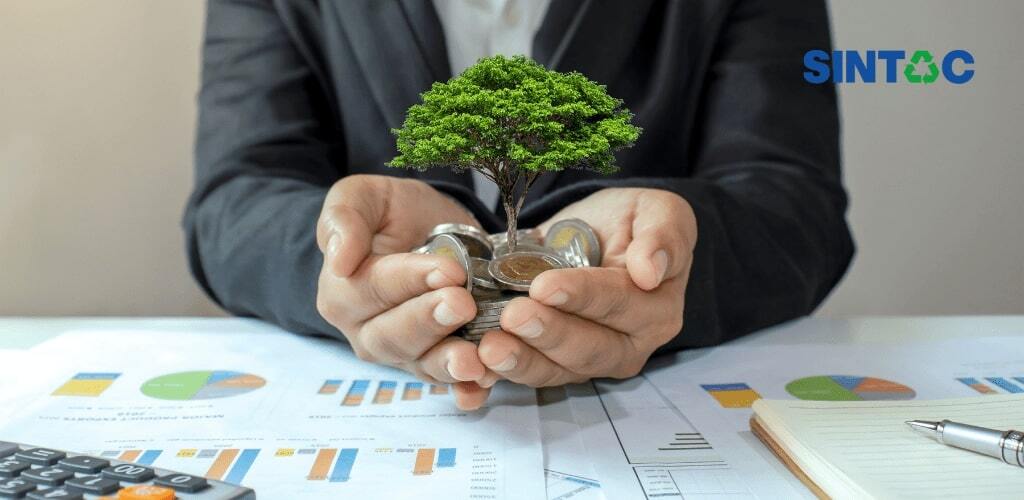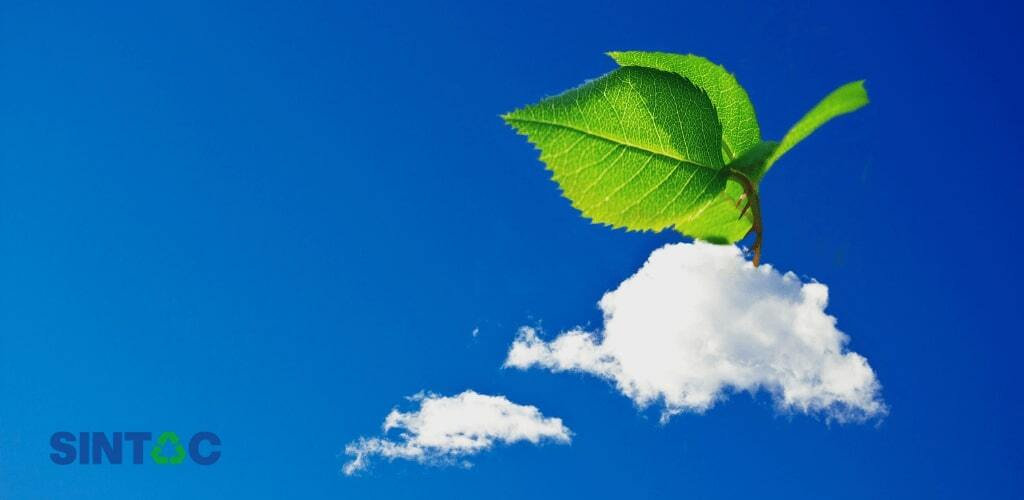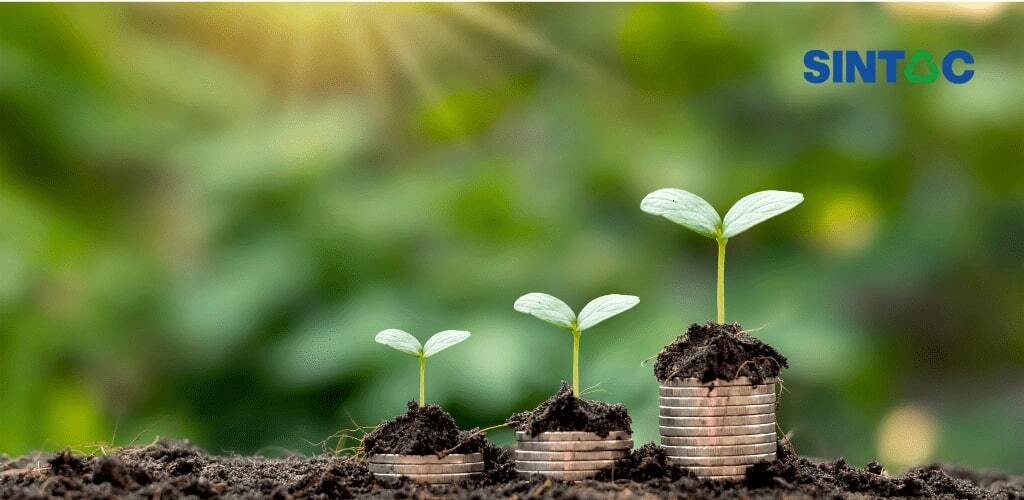What is the green economy?
Green economics is a methodology of economics that supports the harmonious interaction between humans and nature and seeks to meet the needs of both simultaneously. Green economists can study the impact of alternative energy sources, sustainable agriculture, wildlife protection or environmental policies.

Key points
-Green economics refers to an economic discipline that focuses on developing an approach that promotes harmonious economic interactions between humans and nature.
-It has a broad spectrum that incorporates the means of interacting with nature and the methods used to produce goods.
-Green economists can study the economics of alternative sources of energy, materials, food or other industrial processes.
-Green economics is closely related to ecological economics, but is different because it is a holistic approach that includes political advocacy for sustainable solutions.
-Some critics believe that “green” economic solutions are counterproductive, due to unexpected impacts on the natural environment.
Understanding the green economy
There are various definitions of a green economy. In 2011, the International Chamber of Commerce (ICC) stated in its “10 conditions for transitioning to a green economy” that a green economy is one “in which economic growth and environmental responsibility are mutually reinforcing, while supporting social progress and development”.1 One of the ways in which the green economy has made its way into the mainstream has been through consumer-oriented labels that indicate how sustainable a product or company is.
Green economy theories encompass a wide range of ideas that address the interconnected relationship between people and the environment. Green economists argue that the basis of all economic decisions must be linked in some way to the ecosystem and that natural capital and ecological services have economic value.
Advantages of the green economy:
- The green economy potentially contributes to the reduction of environmental pollution and thus improves the quality of soil, water and air and also protects environmental well-being.
- Global warming, loss of biodiversity, deforestation, desertification and resource depletion can be gradually obstructed through the implementation of the green economy, which will automatically save the earth and its animals from destruction as far as possible.
- Economic growth is also favoured by the establishment of new markets for biofuels and renewable energy resources.
- The establishment of new markets has the potential to support international benefits as these new markets will invite funds through exports and also increase domestic sales.
- The creation of more industries means more employment and more employment means a more stable society as economically, people will be secure.
- Agricultural industries will be able to attain a dignified place due to the emphasis on green technologies.
- Innovation needs innovative skills and this will invite the creation of more educational institutions which will ultimately increase the possibilities of students.

Disadvantages of the green economy:
- The transition to the green economy takes a long time and will require constant vigilance and effort, although the effort and time put into the process has a worthwhile outcome.
- Initially, product costs can be very high, as the establishment of new green industries and their technologies will be costly.
- Green and environmentally friendly products are always more expensive than conventional goods.
- Hard work, constant effort, extra time and a larger number of trained faculties will be required for the creation and gradual increase in efficiency of new educational disciplines.
- New inventions and discoveries will involve extensive research that will cost large amounts of government investment.
- Large investments require enormous funds that can be raised by increasing taxes on citizens.
- During the first years of development of the green economy, bribery by dishonest authorities may increase.
Therefore, there are many challenges in the implementation of the green economy.
Examples of green economy:
Examples of green economy can be found in people’s everyday lives. The substantial growth of the organic farming sector, the creation of plant-based homes and the use of bicycles as a means of transport are some of the ways in which people contribute to the green economy.
- Vegetable homes:
Vegetable homes are healthy and sustainable. With proper rooftop collection systems, the mix of healthy homes with a tinge of tradition is allowing people to experiment with traditional lifestyles. These houses have a designated mini recycling arena and proper ventilation systems that make them better than traditional houses.
The construction process for traditional houses usually takes a year, but the plant-based houses are ready in six months. Teak, bamboo and sundari are some of the plants used to build houses. Plant-based houses are sustainable and will lead the future of living.
Recycling lithium batteries:
Lithium-ion batteries are used in laptops and mobile phones. These batteries contribute to increased global warming as they use mining to extract cobalt and lithium.
Although they are the lifeblood of processing systems, their impact on the environment cannot be overlooked. Lithium batteries overheat and are not sustainable. Recycling lithium batteries is the best way to solve existing problems.
An advanced Li-cycle system is used to recycle lithium batteries. The lithium batteries are converted into stationery products. The battery materials after conversion are processed and recycled. Recycling lithium-ion batteries is a sustainable way to preserve the energy of the future. Listen to this podcast to understand the process of recycling lithium-ion batteries.
3. Organic farming:
Natural farmyard manure is the best way to increase the production of a crop without the use of pesticides and fertilisers. This unique blend of green manure, bone meal and compost meal using only organic fertilisers is known as organic farming.
Organic farming has become everyone’s favourite concept in the modern era, these are the many advantages of organic food. They increase the body’s resistance to antibiotics, improve taste, promote overall health and reduce the chances of lung disorders.
This type of farming improves the nutrient potion of the soil. Organic farming is better for overall environmental health. It preserves nature as it is free of chemicals, reduces the risk of soil erosion and helps preserve biodiversity.
Many countries are adopting organic farming because of its countless benefits. Organic products will eradicate traditional farming methods, sustainable agriculture is the future and organic farming is one step in the grand plan.
Countries adopting various green economy models: (The following data is from the Green Policy Platform)China’s energy plans are geared towards green sectors. It has allocated huge funds for the development of green forestry areas and the creation of solar and hydropower plants. Its seven-year energy plan will focus on green investments and green employment models. Known as the biggest contributor to global warming, China’s focus is on clean energy at the moment.
Kenya’s feed-in tariff model: The feed-in tariff model is a way to improve production in the renewable energy sectors. The Kenyan government offers long-term power contracts to renewable energy producers. These energy sectors further accelerate the growth of the economy, following a green model.
Promoting growth through rural green infrastructure: The Indian government focuses on social inclusion through the introduction of new schemes. Schemes such as NREGA (National Rural Employment Guarantee Act) focus on improving the livelihoods of marginalised sections of society. This scheme, which is part of the labour legislation, affects the lives of casual labourers in rural areas and guarantees them the “right to work”.
Sustainable industrial planning in Brazil: Curitiba is known as the sustainable city of Brazil, this state is well known for its urban development. The greenest city in the world promotes sustainable living. It has 400 square kilometres of forest land. It offers several programmes to encourage individuals to recycle waste material.

Green economy versus ecological economy
In many ways, green economics is closely related to ecological economics in the sense that it sees natural resources as having measurable economic value and in the way it focuses on sustainability and fairness.4 But when it comes to implementing these ideas, green economics advocates are more focused on policy. Green economists advocate a system of cost accounting in which entities (government, industry, individuals, etc.) that harm or neglect natural assets are held accountable for the damage they cause.
Difference between green economy vs. blue economy?
Blue and green are the predominant colours of our planet when we observe it from space. That is why these two economies: green and blue, are deeply related and aim, precisely, to protect the Earth’s resources through a sustainable system of exploiting them.
When we talk about sustainability and a green, low-carbon, resource-efficient and socially inclusive economy, we cannot forget that more than 70% of our planet’s surface is occupied by seas and oceans and, therefore, dressed in blue. This is where the blue economy, which sees the seas and oceans as engines of growth and innovation for sustainable and profitable economic development, comes into its own.
The green economy requires businesses to invest more and consumers to pay more to get the same in return for preserving the environment. The blue economy is about understanding waste as a resource and seeking solutions inspired by nature’s design.













